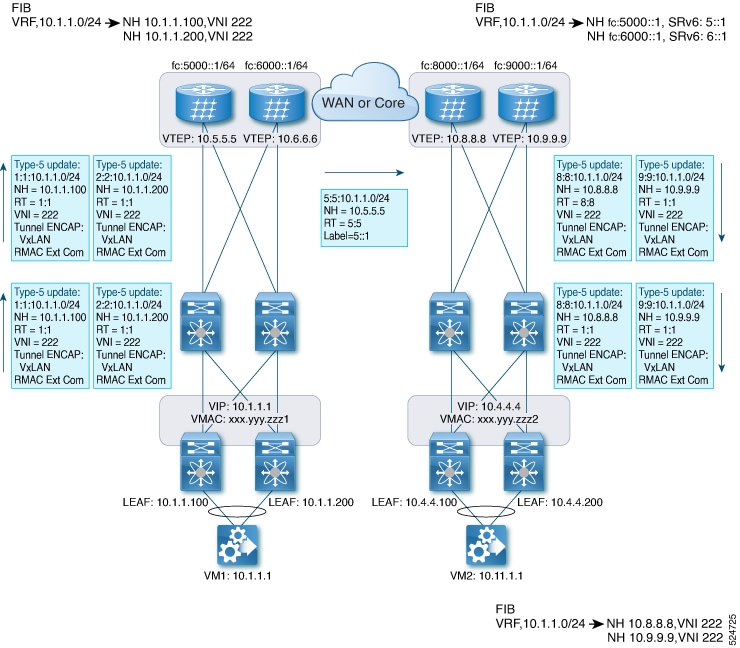About Seamless Integration of EVPN with L3VPN SRv6 Handoff
Data Center (DC) deployments have adopted VXLAN EVPN for its benefits such as EVPN control-plane learning, multitenancy, seamless mobility, redundancy, and easier POD additions. Similarly, the CORE is either an IP-based L3VPN SRv6 network or transitioning from the IPv6-based L3VPN underlay to a more sophisticated solution like IPv6 Segment Routing (SRv6) for IPv6. SRv6 is adopted for its benefits such as:
-
Simpler traffic engineering (TE) methods
-
Easier configuration
-
SDN adoption
With two different technologies, one within the data center (DC) and one in the Core, there is traffic handoff from VXLAN to an SRv6 core that becomes a necessity at the DCI nodes, which sit at the edge of the DC domain and interface with the Core edge router.
Traffic Handoff Process between EVPN-VXLAN and L3VPN SRv6
For traffic ingressing the EVPN-VxLAN fabric, the BGP EVPN routes get imported into a local VRF which contains the RD of the VRF. The bestpath is calculated and installed in the VRF's RIB, then inserted into the L3VPN SRv6 table. Along with the bestpath, the VRF's RD and per-VRF SRv6 SID are included. The L3VPN SRv6 route target is sent with the route, which is advertised to the L3VPN SRv6 peer.
For traffic egressing the EVPN VxLAN fabric, the BGP L3VPN SRv6 routes get imported into a local VRF which contains the RD of the VRF. The bestpath is calculated and installed in the VRF's RIB, then inserted into the EVPN table. Along with the bestpath, the VRF's RD and VNI are included. The EVPN-VXLAN route target is sent with the route, which is advertised to the EVPN-VxLAN peer.
The following figure illustrates the handoff between BGP EVPN VXLAN and L3VPN SRv6:


 Feedback
Feedback